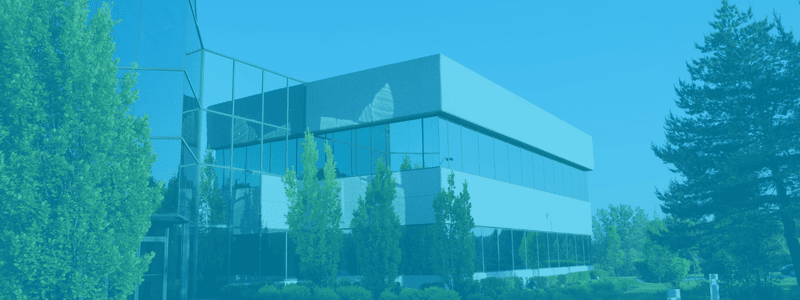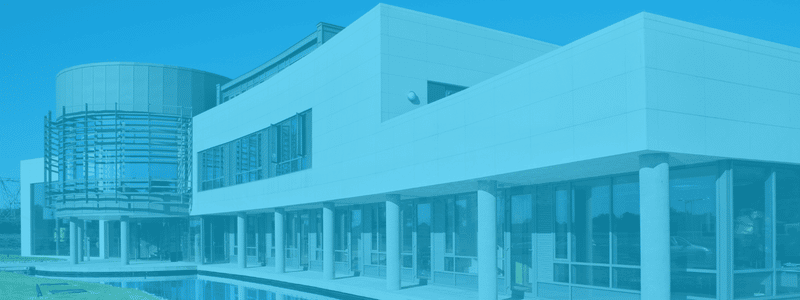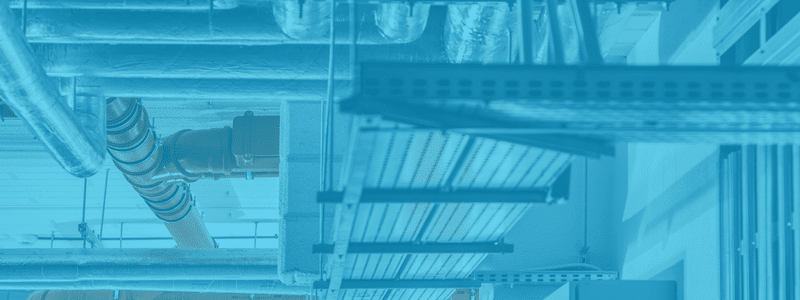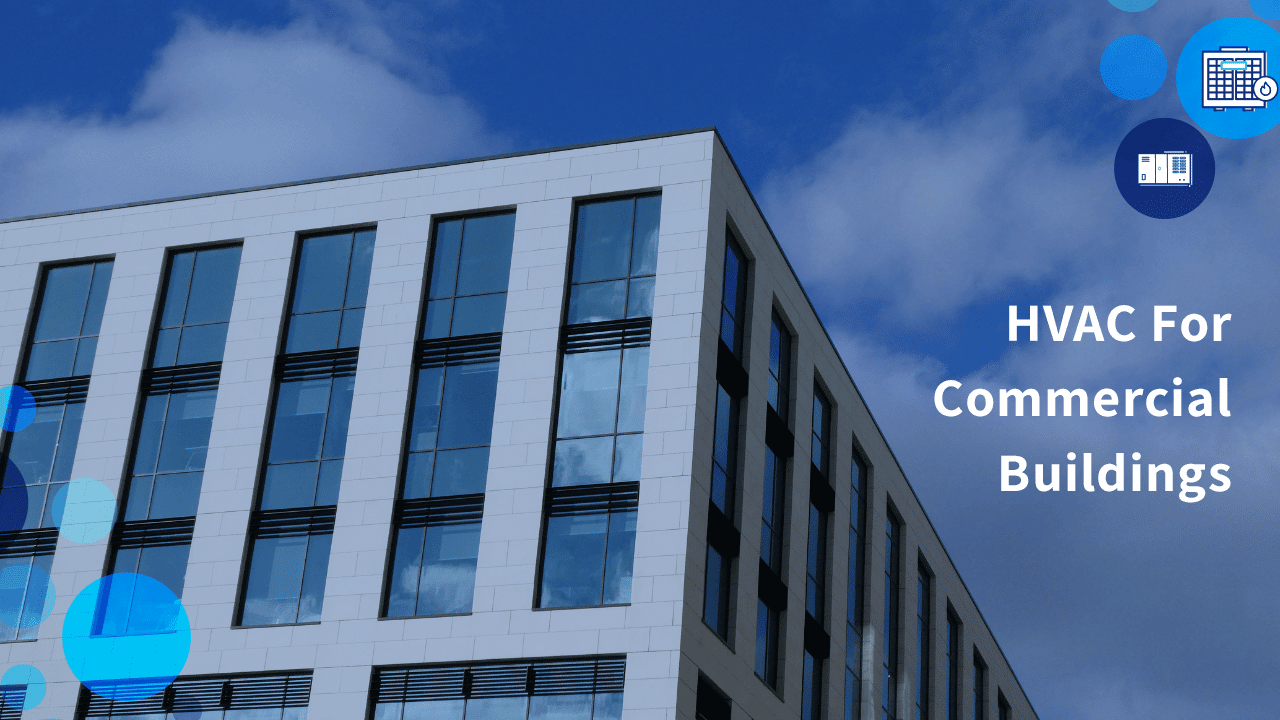When planning for a new building, it’s impossible to avoid questions about the best HVAC system. Should you install a residential HVAC system or a commercial HVAC system? What’s the difference between the two types, and how do those differences affect their operation and efficiency?
While the underlying principles of heating and cooling residential and commercial properties are largely the same, the two types of HVAC systems aren’t interchangeable. Factors like size and location set them apart, as well as the expertise needed to install, repair and maintain the equipment.
Do you need to install a proper HVAC system in your commercial property? Read on to learn all about HVAC for commercial buildings.


How Does HVAC for Commercial Buildings Differ from Residential HVAC?
What are the primary differences between HVAC for commercial buildings and HVAC for residential properties? Obviously, the heating, cooling and ventilation needs of a commercial building will be very different from that of a residence. Although the commercial and residential HVAC systems serve the same primary purposes, there are a few key differences, including:
- Size – Commercial HVAC systems usually are much larger than their residential counterparts. It takes more power to properly heat, cool and ventilate larger properties, and commercial buildings typically consist of far greater square footage than homes. It only makes sense that larger equipment is required to produce the additional power.
- Location – Residential HVAC units usually are located on the ground outside the home. But because commercial HVAC equipment takes up so much more space, it’s often preferred to install them on the building’s rooftop. Roof installation also allows for easier maintenance and less noise pollution inside the building.
- Complexity – Partially due to their larger size and increased power requirements, commercial HVAC systems usually are more complex than residential HVAC. HVAC demands in a commercial building also can be more complex themselves since the property might have different temperature and ventilation needs for different parts of the building.
- Design – Residential HVAC systems generally involve a split system design consisting of an outdoor unit and indoor elements. Commercial HVAC systems, however, typically consist of a packaged unit, in which the various equipment is all placed inside a single cabinet. This way, the entire unit can be moved or adjusted as needed, accommodating a changing business.


What Types of Heat Are Used in Commercial Buildings?
Commercial heating systems are larger, more complex and more expensive than HVAC for residential use. They are also available in multiple varieties, and understanding the types of commercial heating systems can help choose the best system and the best HVAC contractor to install it. A few of the most common types of commercial heating systems include:
- Natural energy systems – Heating systems that use solar power, geothermal energy or other sustainable fuel sources are popular commercial heating options since they are environmentally friendly. Natural energy systems also are often more cost efficient over time since they consume less or inexpensive fuel. Installation costs, however, can be higher compared to other commercial heating options.
- Heat pump systems – Heat pump systems warm a building by extracting heat from the air and circulating it through a property. These commercial heating options don’t rely on a fuel source, so they are both energy- and cost-efficient. In areas that regularly experience freezing temperatures, however, the systems can become uneconomic since they require electric back-up heaters when temperatures grow too cold to extract heat.
- Gas or oil water heating systems – Water heating systems rely on a boiler, which is powered by either oil or gas. The commercial heating systems produce steam heat with water that passes through radiators spread throughout a building. These systems are considered inefficient because air in the system has to clear each time the heat is activated, wasting energy and adding time to the warming process.
- Gas or oil steam heating systems – One of the oldest ways to provide central heating to a commercial property, gas or oil steam systems rely on either oil or gas as fuel to boil and condense steam that is passed through pipes. The heating systems, however, are inefficient and heat properties slowly because the steam first has to boil before any heat can circulate.
What Are the Types of Commercial Air Conditioning?
Most commercial buildings are now air conditioned, but that definitely doesn’t mean they all use the same system. Instead, commercial air conditioners are available in a variety of designs with various cooling capacities to meet the diverse needs of commercial buildings ranging from large offices to factories to small stores. A few of the most common types of commercial air conditioning include:
- Central AC – Central air conditioners move cool air throughout a building with the help of ductwork. They also remove humidity from the air, which increases comfort levels. More affordable than some other systems, central air conditioning is ideal for residential and small commercial settings, but might be less efficient for larger properties.
- Multi-split systems – Multi-split AC systems allow users to connect multiple indoor units to a single outside unit. These commercial AC systems frequently are used by restaurants, offices and other businesses. When fewer outdoor units are used, the systems require less space and are more attractive than bulkier packaged systems.
- Ductless split systems – A ductless mini-split AC system consists of outdoor and indoor units connected with refrigerant tubing and electrical cables. The inside unit adds cooled air to the space, eliminating the need for ductwork. These systems are perfect for smaller spaces.
- Chillers – Chillers are widely used to cool commercial buildings. The inexpensive option can be either an air cooler, which takes heat from the atmosphere, or a water cooler, which employs a cooling tower to chill water refrigerant.
- Variable refrigerant flow systems – A VRF or VRV system is an ideal cooling option for medium or large properties such as retail stores, hotels and larger workplaces. Not only are these systems effective in structures with multiple rooms, but they efficiently collect wasted heat from a building and redirect it to heat waters and other areas. The system even can cool one room of a building while heating another.


Which HVAC System Is Best for a Commercial Building?
Which HVAC system is best for a commercial building? Unfortunately, there’s no simple answer to that question since a variety of factors influence the decision. Before choosing the best HVAC system for a commercial building, it’s important to consider the building’s design, its energy efficiency, the local climate conditions and even the air quality.
What are the space’s cooling requirements, and how many people will be occupying the building? What activities will they be performing? Does the building have adequate insulation, and does the area experience extreme temperatures? Do any of the building’s functions negatively impact indoor air quality? The answers to all of these questions should be taken into account when choosing the best commercial HVAC system.
What Is the Longest-lasting Commercial HVAC System?
While advancements in HVAC technology have extended the lifespans of most HVAC products, including commercial HVAC systems, the equipment still will eventually fall into disrepair. So, what is the lifespan of commercial HVAC equipment, and which HVAC system lasts the longest?
The life expectancy of HVAC systems for commercial buildings ranges from 15-20 years, although this can be influenced by factors such as its size, maintenance, weather conditions and even the quality of the initial installation. Likewise, different system components can last varying amounts of time. For example, a typical furnace will last 20 years, while a heat pump might only last for 15 and a boiler might operate for as long as 35 years.












